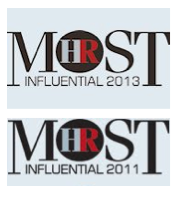 There have been a lot of posts on other blogs over the last couple of weeks on new years resolutions and I suppose, slightly similarly, objective setting within organisations.
There have been a lot of posts on other blogs over the last couple of weeks on new years resolutions and I suppose, slightly similarly, objective setting within organisations.
I've not commented on them as I've not seen anything particularly new or interesting, at least to me. This isn't new either, I developed it while I was at Buck, but it might still be worth sharing more broadly (for more information, see
Campaign for Performance).
The slide is built upon my value triangle but was also based upon additional research.
At the bottom of the triangle is performance appraisal, which provides a means of assessing people against basic standards of performance, rating and ranking them to identify how much they should be rewarded and who should be promoted. This is an essential activity, but focusing here leads to performance management becoming associated with paperwork, bureaucracy and difficult conversations and eventually to it being discredited as an administrative chore.
More important than this is providing and assessing people against clear, SMART (specific, measurable, achievable, realistic and time-bound) forward-looking objectives which have been cascaded down from the top of the organisation. This is the basis of performance alignment, a continuous monitoring process in which both employees and managers take joint responsibility for managing and improving performance. Performance alignment forms part of HRM – it treats people as resources and seeks to align them with the achievement of business objectives.
However, employees want much more than just to play a role – they seek enjoyment, inspiration and meaning from their roles. So managers must remember to treat people as individuals, helping them to focus on what they are interested in doing and what they do best. Performance leadership meets this need by helping people identify compelling goals, harnessing their capability and inspiration in order to motivate them, help them grow and encourage them to stay. Performance leadership works from the bottom-up and corresponds to HCM – it harnesses individual human capital to provide opportunities for transformational change within the business.
Each of these three types of performance management has its place, but my belief is that its performance leadership that will have the greatest impact on peoples' behaviour and organisational results.
Thursday 17 January 2008
Value in performance management
Subscribe to:
Post Comments (Atom)





























0 comments:
Post a Comment
Please add your comment here (email me your comments if you have trouble and I will put them up for you)